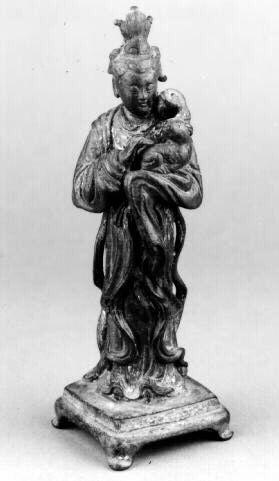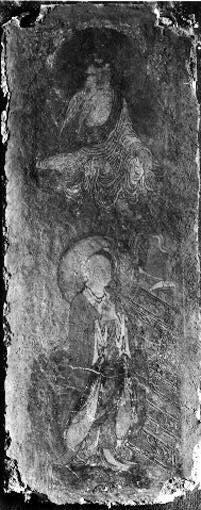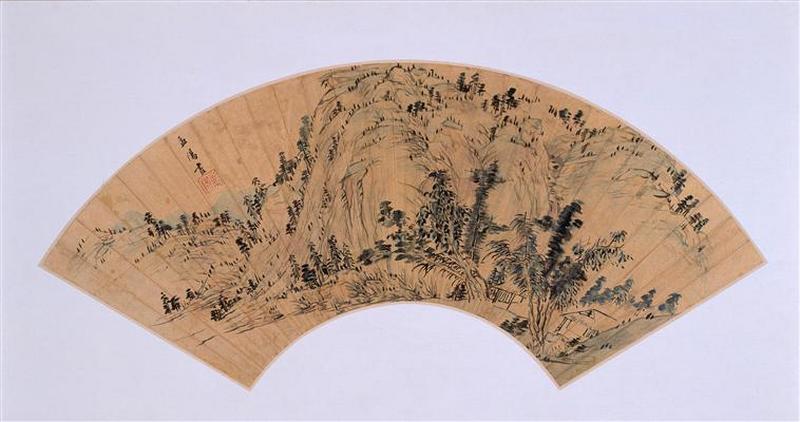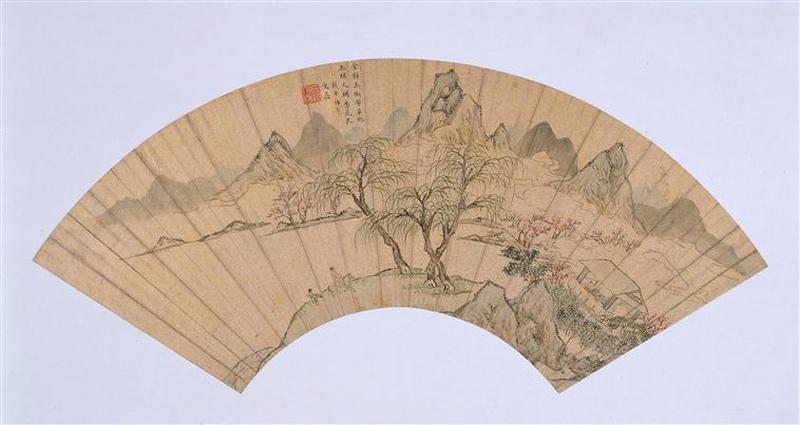Environ 90 résultats pour « Dynastie Ming »
-

Dynastie Ming
La dynastie Ming est une lignée d'empereurs qui a régné sur la Chine de 1368 à 1644 après l'effondrement de la dynastie Yuan dominée par les Mongols. La dynastie Ming, « l'une des plus grandes périodes de gouvernement efficace et de stabilité sociale de l'histoire humaine » fut la dernière dynastie chinoise dominée par les Han. Bien que la capitale Ming, Pékin soit tombée en 1644 lors de la rébellion menée par Li Zicheng qui établit la dynastie Shun rapidement supplantée par la dynastie Qing mandchoue, des régimes loyaux au trône Ming existèrent jusqu'en 1662. Les Ming présidèrent à la construction d'une puissante marine de guerre et d'une armée de métier d'un million d'hommes. Bien que des missions commerciales et diplomatiques eurent existé durant les dynasties précédentes, la taille de la flotte menée par l'amiral eunuque musulman Zheng He était largement supérieure. Il y eut d'énormes projets de construction dont la restauration du Grand Canal et de la Grande Muraille ainsi que la fondation de la Cité interdite à Pékin durant le premier quart du XV siècle. La population de la fin de la dynastie Ming est estimée entre 160 et 200 millions d'individus. L'empereur Hongwu (1368-98) tenta d'établir une société de communautés rurales auto-suffisantes au sein d'un système rigide et immobile qui n'aurait aucun besoin de s'associer à la vie commerciale des centres urbains. Sa reconstruction de la base agricole chinoise et le renforcement des voies de communications à travers le système militaire de coursiers eurent pour conséquence inattendue la création d'importants surplus agricoles pouvant être vendus dans des marchés bourgeonnants le long des routes des coursier. La culture et le commerce rural devinrent influencés par les tendances urbaines. Les catégories supérieures de la société rassemblées au sein de la basse noblesse furent également affectées par cette nouvelle culture centrée sur la consommation. S'éloignant des traditions, les familles marchandes commencèrent à s'intégrer au sein de l'administration et de la bureaucratie et adoptèrent les traits culturels et les pratiques de la noblesse. En parallèle à cette évolution de la société et du commerce, il y eut des changements dans la pensée philosophique, les institutions gouvernementales et dans les arts et la littérature. À partir du XVI siècle, l'économie Ming fut stimulée par le commerce avec les Portugais, les Espagnols et les Hollandais. La Chine fut impliquée dans l'échange colombien qui vit un important échange de biens, de plantes et d'animaux entre l'ancien et le nouveau Monde. Le commerce avec les puissances européennes et le Japon entraina un afflux massif d'argent, qui remplaça le cuivre et les billets de banque en tant que moyen d'échange standard en Chine. Dans les dernières décennies de la dynastie Ming, le flux d'argent vers la Chine diminua fortement et le ralentissement de l'économie fut aggravé par les effets du petit âge glaciaire sur l'agriculture, les catastrophes naturelles et les épidémies. L'effondrement de l'administration qui s'ensuivit permit à des chefs rebelles comme Li Zicheng de défier l'autorité Ming.
-

-
- Artiste(s) :
- Anonyme
Femme debout
-
- Domaine(s) :
- Asie de l'Est
- Sculpture
-
- Sujet représenté :
- Caresse
- Champignon
- Divinité
- Femme
- Immortalité
- Lièvre
-
- Datation :
- XIVe siècle
- XVIIe siècle
- XVIe siècle
- XVe siècle
- Dynastie Ming
-
-

-
- Artiste(s) :
- Anonyme
Roi des enfers
-
- Domaine(s) :
- Asie de l'Est
- Sculpture
-
- Datation :
- XVIe siècle
- Dynastie Ming
-
-

-

-

Retraite dans la montagne
-
- Domaine(s) :
- Asie de l'Est
- Peinture
-
- Sujet représenté :
- Arbre
- Cours d'eau
- Montagne
- Mort
- Paysage
-
- Datation :
- XVe siècle
- Dynastie Ming
-
-

Demeurer dans la tranquillité
-
- Domaine(s) :
- Asie de l'Est
- Peinture
-
- Datation :
- XVIe siècle
- XVe siècle
- Dynastie Ming
-
-

Paysage
-
- Domaine(s) :
- Asie de l'Est
- Peinture
-
- Sujet représenté :
- Chemin
- Cours d'eau
- Montagne
- Paysage
- Vallée
-
- Datation :
- XVIe siècle
- Dynastie Ming
-
-

Première ode à la Falaise rouge ; Calligraphie
-
- Domaine(s) :
- Asie de l'Est
- Peinture
-
- Datation :
- XVIe siècle
- Dynastie Ming
-
-

Magnolia
-
- Domaine(s) :
- Asie de l'Est
- Peinture
-
- Sujet représenté :
- Magnolia
-
- Datation :
- XVIe siècle
- Dynastie Ming
-
-

Paysage
-
- Domaine(s) :
- Asie de l'Est
- Peinture
-
- Sujet représenté :
- Arbre
- Cours d'eau
- Montagne
- Paysage
-
- Datation :
- XVIe siècle
- Dynastie Ming
-
-

Rocher et orchidée
-
- Domaine(s) :
- Asie de l'Est
- Peinture
-
- Sujet représenté :
- Orchidaceae
- Ronce commune
-
- Datation :
- XVIe siècle
- Dynastie Ming
-
-

Paysage
-
- Domaine(s) :
- Asie de l'Est
- Peinture
-
- Sujet représenté :
- Arbre
- Chemin
- Cours d'eau
- Montagne
- Pavillon (marine)
- Paysage
-
- Datation :
- XVIe siècle
- Dynastie Ming
-
-

Paysage
-
- Domaine(s) :
- Asie de l'Est
- Costume
- Peinture
-
- Sujet représenté :
- Arbre
- Cours d'eau
- Maison
- Montagne
- Paysage
-
- Datation :
- XVIe siècle
- Dynastie Ming
-
-

-

Orchidées
-
- Domaine(s) :
- Asie de l'Est
- Peinture
-
- Sujet représenté :
- Orchidaceae
-
- Datation :
- XVIe siècle
- Dynastie Ming
-
-

Feuilles de bananier
-
- Domaine(s) :
- Asie de l'Est
- Peinture
-
- Sujet représenté :
- Bananier
-
- Datation :
- XVIe siècle
- Dynastie Ming
-
-

-
- Artiste(s) :
- Anonyme
Tonsure de l'Empereur Wu des Liang
-
- Domaine(s) :
- Asie de l'Est
- Peinture
-
- Sujet représenté :
- Bouddhisme
- Chine
- Empereur
-
- Datation :
- XIVe siècle
- XVIIe siècle
- XVIe siècle
- XVe siècle
- Dynastie Ming
-
-

-
- Artiste(s) :
- Anonyme
Tonsure de l'Empereur Wu des Liang
-
- Domaine(s) :
- Asie de l'Est
- Peinture
-
- Sujet représenté :
- Bouddhisme
- Chine
- Empereur
-
- Datation :
- XIVe siècle
- XVIIe siècle
- XVIe siècle
- XVe siècle
- Dynastie Ming
-
-

-
- Artiste(s) :
- Anonyme
Tonsure de l'Empereur Wu des Liang
-
- Domaine(s) :
- Asie de l'Est
- Peinture
-
- Sujet représenté :
- Bouddhisme
- Chine
- Empereur
-
- Datation :
- XIVe siècle
- XVIIe siècle
- XVIe siècle
- XVe siècle
- Dynastie Ming
-
-

-
- Artiste(s) :
- Anonyme
Scène bouddhique
-
- Domaine(s) :
- Asie de l'Est
- Peinture
-
- Sujet représenté :
- Bouddhisme
- Chine
-
- Datation :
- XIVe siècle
- XVIIe siècle
- XVIe siècle
- XVe siècle
- Dynastie Ming
-
-

-
- Artiste(s) :
- Anonyme
Scène bouddhique
-
- Domaine(s) :
- Asie de l'Est
- Peinture
-
- Sujet représenté :
- Bouddhisme
- Chine
-
- Datation :
- XIVe siècle
- XVIIe siècle
- XVIe siècle
- XVe siècle
- Dynastie Ming
-
-

-
- Artiste(s) :
- Anonyme
Scène bouddhique
-
- Domaine(s) :
- Asie de l'Est
- Peinture
-
- Sujet représenté :
- Bouddhisme
- Chine
-
- Datation :
- XIVe siècle
- XVIIe siècle
- XVIe siècle
- XVe siècle
- Dynastie Ming
-
-

-
- Artiste(s) :
- Anonyme
Buddha assis
-
- Domaine(s) :
- Asie de l'Est
- Peinture
-
- Sujet représenté :
- Bouddha
- Bouddhisme
- Chine
-
- Datation :
- XIVe siècle
- XVIIe siècle
- XVIe siècle
- XVe siècle
- Dynastie Ming
-
-

En bateau avec du vin, partir à l'aventure
-
- Domaine(s) :
- Asie de l'Est
- Costume
- Peinture
-
- Sujet représenté :
- Cours d'eau
- Montagne
- Pavillon (marine)
- Paysage
- Pin (plante)
-
- Datation :
- XVIIe siècle
- XVIe siècle
- Dynastie Ming
-
-

Fleurs et oiseaux
-
- Domaine(s) :
- Asie de l'Est
- Costume
- Peinture
-
- Sujet représenté :
- Branche (botanique)
- Fleur
- Oiseau
- Prunier
-
- Datation :
- XVIe siècle
- Dynastie Ming
-
-

Chrysanthèmes
-
- Domaine(s) :
- Asie de l'Est
- Costume
- Peinture
-
- Sujet représenté :
- Chrysanthème
- Fleur
-
- Datation :
- XVIIe siècle
- Dynastie Ming
-
-

-

-
- Artiste(s) :
- Cheng Jiasui
Paysage
-
- Domaine(s) :
- Asie de l'Est
- Costume
- Peinture
-
- Datation :
- XVIIe siècle
- XVIe siècle
- Dynastie Ming
-
-

Paysage
-
- Domaine(s) :
- Asie de l'Est
- Costume
- Peinture
-
- Sujet représenté :
- Arbre
- Homme
- Montagne
- Mulet
- Passerelle (architecture)
- Pavillon (marine)
- …
-
- Datation :
- XVIe siècle
- Dynastie Ming
-
-

Bambous et rochers
-
- Domaine(s) :
- Asie de l'Est
- Costume
- Peinture
-
- Sujet représenté :
- Arbre
- Bambou
- Fleur
- Iris (genre végétal)
- Paysage
-
- Datation :
- XVIe siècle
- Dynastie Ming
-
